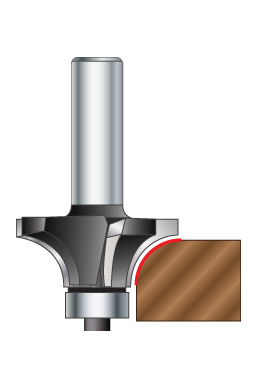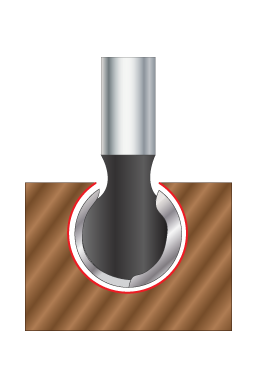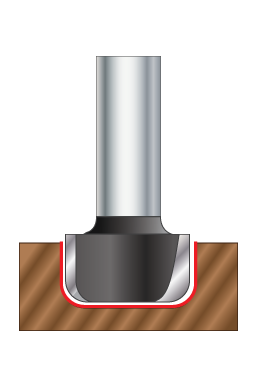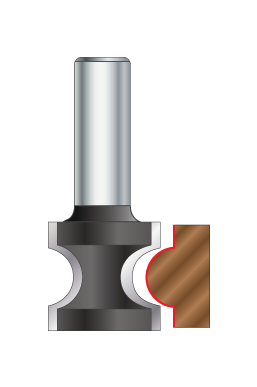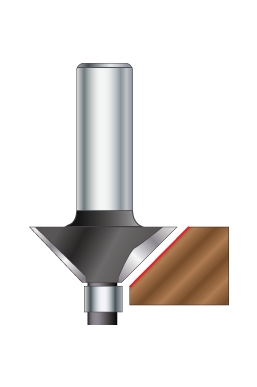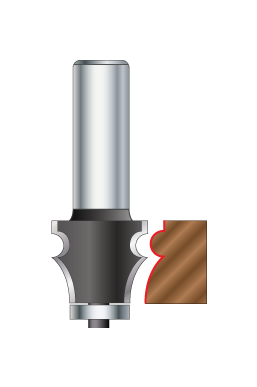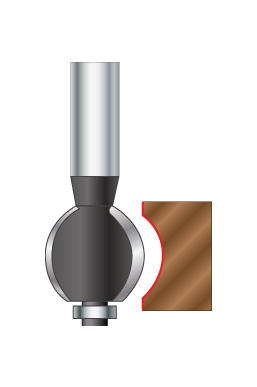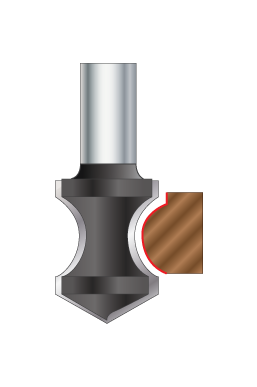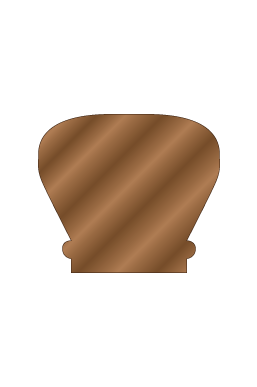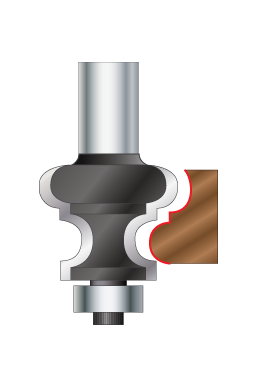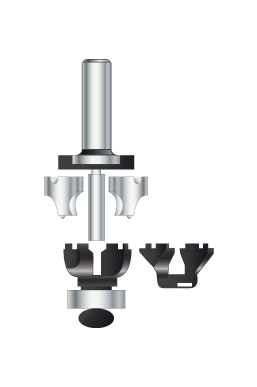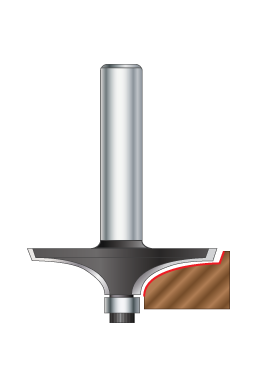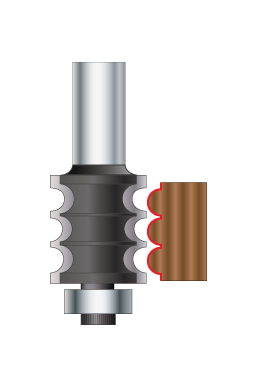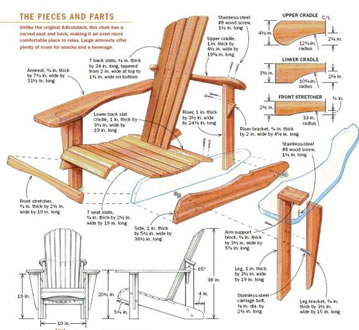The router is one of the most popular tools in woodworking and can also be used as a hand tool or combined with a router table. Wood routers come in two predominantly designs Fixed and plunge, which are created according to the type of work they produce, and most importantly they can’t operate without bits thus making the router bit profiles essential.
Selecting the right router bit is crucial, therefore, here is an attempt to list and describe the multiple types of router bit profiles you would be using throughout your woodworking adventure.
Router bit profiles
4 flute corner round router bits
This tool does exactly what its name suggests which is round off edges—according to its radius—around any of its four corners built into the rounding bit. The 4 flute corner round router bits also comes with different radius but the more popular sizes used for most woodworking jobs are the ¼, ½ and 3/8 inch radius.
ball end router bits
The ball end router bit is designed for cutting circular channels on pipes or cables due to its ball-shaped cutting edge. This router bit is generally applied with a single pass or stroke in other to reduce stress on the bit. It also comes in multiple radiuses with the ¼ , 3/8 and 5/16 inches bits are the most commonly used ones.
beading router bits
A bead is a quarter-round shape bounded by fillets and this is exactly what this router bit does. The widths of both fillets are set by the pilot bearing size and the depth of cut after its use. This router bit is used for finishing flat surfaces or edges on stairs and other wooden surfaces. It also comes in different radiuses according to the size you choose.
bowl & tray router bits
As the name suggests, the bowl & tray router bits are used for routing flat dishes, wooding trays, bowls, and other flat surfaces in order to create a shallow space or bowl on these surfaces. On application, this bit cuts flat, smooth bottom surfaces, vertical walls, and a transition radius when applied.
Bullnose router bits
This router bit is built to cut a fillet in between two flat surfaces and is used to design stair threads, window seals, and counter edges. On application, it provides a fillet and a 180-degree ‘round over’ on the surface, it is applied on. It also comes with different radial sizes including the ¼, ½, and 1/8 option.
Chamfer router bits
Chamfer router bits are designed to provide a chamfered finish on wooden edges when applied and they are generally used on tabletops, counter edges, and other flat edges. The chamfer router bit comes in different radiuses which leave their crisp imprints at accurate angles to make 4, 6, 8, etc. boxes when applied to an edge. The sizes include ¼, ½, and 1/8.
Classical cove & bead router bits
The classical clove and bead router bits are bits used to create a bead and a corresponding fillet at the base of the bead. It also comes in different configurations were the bead and cove are reversed unlike the one in the picture below. It also comes in different radiuses including the popular ¼ radius size.
Classical cove router bits
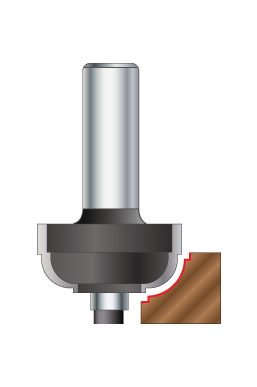
The classical cove bit is popular due to its use as a filleting tool in period moldings. On application, it produces a cove flanked by step fillets and can be applied on table edges, stools, and window seals. Basically, it comes in two radiuses: the 5/16 and 3/16 sizes.
Classical molding router bits
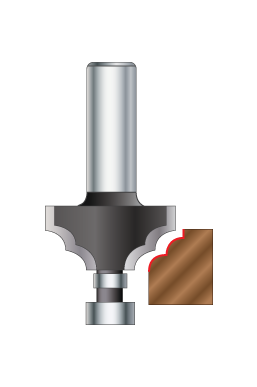
The classical molding router bits are also popular molding tools used in woodworking to create multiple beads on flat edges. This router bit is mostly used on bed stands.
Core box router bits
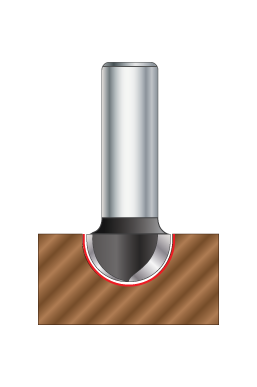
These router bits are used as molding tools to Cut half-round grooves for fluted moldings, columns, and millwork. Note that on cutting with the core box router bit, it produces a semi-circular indent on the surface it is applied on. The tool also comes in different radiuses such as the ½ and ¼ sets.
Corner beading router bits

The corner beading bits produce three different profiles which are an edge bead—with or without a fillet—and a full corner bead and this is achieved by changing the extension when in use. This tool is usually used to provide antique decorations to flat edges when needed. It also comes in different radiuses.
Corner round router bits
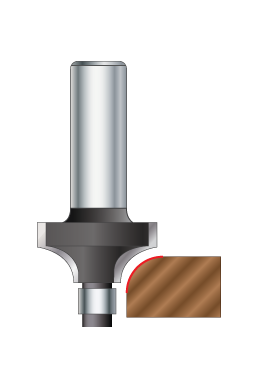
This is a quite popular router bit in woodworking due to its use as a rounding tool for edges according to the selected radius. The corner round router bit also known as a quarter round can also be used to ease sharp edges on furniture and it comes in diverse diameter bearings such as the ½ , ¼ , and 3/16.
Corner round router bits w/ 1/4 Dia ball bearing
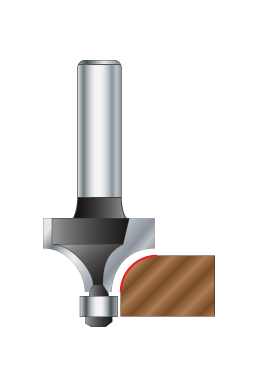
This is a traditional quarter rounding tool that works with its ¼ diameter ball bearing to round narrow edges. The tool is also shouldered to cut a fillet and is basically used on sharp-edged furniture or windows.
Corner round router bits w/ 3/8 Dia ball bearing

Here is another version of the previous router bit with a different diameter which is 3/8 in this case.
Cove router bits
This cove bit is a well-used tool in woodworking due to its ability to detail diverse edges such as case works, doors, drawers, columns, and posts. It also is one-half of the rule joint used on drop-leaf tables. This tool basically comes in different radiuses which include the ¼, ½, and 1/8 bearings.
Drawing line router bits
The drawing line router bit is used as a cutting tool that produces an edge bead without a quirk. The farther it cuts also determines the final shape it produces which is basically a fillet above the initial bead. It also comes in different sizes such as the ¼, and ½ radius.
Edge beading router bits
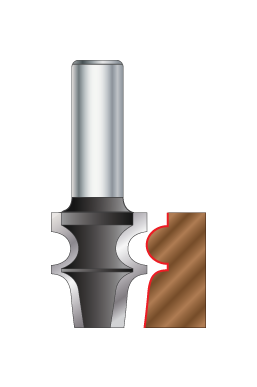
The edge beading router is similar to that of the corner bead discussed above but it also spots a radial quirk rather than a hard-edged quirk. The bit which possesses 2 flutes is used for designing table and stool edges as well as other flat edges. It usually comes with a radius of 5/32.
Edge fluting router bits
The edge fluting router bit is designed to produce a fingernail flute instead of a 180-degree radius flute when applied. It is generally applied in the making of small-scale cornice-type moldings on flat surfaces. It is a tool used in finishing or hollowing flat surfaces as the need may be. The edge flute comes in different sizes including the ½ , ¼ , and ¾ radius size.
Handgrip plunge router bits
As the name suggests, the handgrip plunger is designed for forming and edging internal hand-holds and cut-outs in a single pass. The bit is basically used to design holds on flat surfaces which can be seen on flat surfaces.
Handrail router bits
The handrail router bit is used to shape flat surfaces in such a way that it creates a knob or rail that can serve as a handle for human use. The device is usually employed on shaping desks and cupboards to provide handrails for use. Like most bits, it comes with multiple radiuses which make it a versatile tool type.
Insert cove router bits
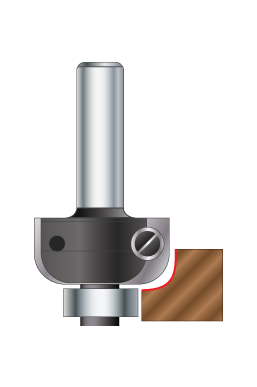
This is an ideal tool for routing out hard or softwood as the user sees fit. On application, the tool provides a radial cut with two straight edges on either side. The In-tech insert cove router bit with the ½ inch radial bit is quite popular in woodworking.
Leaf-Edge beading router bit sets
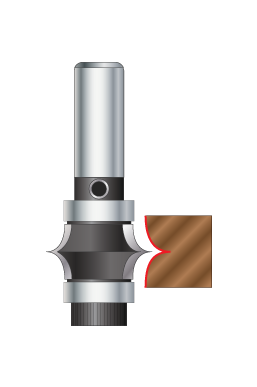
This is a design tool used in routing out leaf-like shapes on flat surfaces in order to provide beautiful designs on furniture surfaces. The leaf-edge beading router bit does this by creating a horizontal slice and two beads at each side of the slice. They come in different sets that produce varying leaf designs and flat surfaces and edges.
Louver router bits
The louver router bits are used to cut shapes resembling a series of closed window louvers. A tool is basically a design tool that can be used to decorate chair and stool legs as well as other flat furniture surfaces. The bit also comes in different radiuses depending on the user’s needs.
Matched bead router bits
The matched bead router bit is a dual purpose bit designed to produce both matching moldings and joints. It is generally used as an alternative to other flute and bead configurations when creating beads and joints for canoes and hot tubs. It comes in diverse radiuses which include a ¼, and 3/16 bit size.
Multi-edge beading router bits
The multi-edge beading router bit is used to design multiple beading details on a straight edge as well as on moldings. When applied, it produces a 180-degree bead and small beads according to the radius of the tool. It comes in different radiuses including the ¼ and ½ bit.
Nova system insert router bits
The Nova system insert router bit sets is an interchangeable tool selector which serves as a variable cutting tool and can be used to design knife holders and kitchen boards for domestic use. The system provides insertion space for knives which are then used to cut or carve on flat surfaces as well as edges.
Ogee router bits
The Ogee bit is designed to have a convex curve coming off the bearing. The Ogee curve begins with a concave inning at the top and curves down into a convex curve. When applied, this router bit provides two straight edges and a bead and convex curve in the middle. The Ogee router bit comes with ¼, 5/32, and 3/8 radius amongst others.
Reed edge router bits
The reed edge bit is known for its elegant designs and is a design tool used to create patterns on wooden edges such as beds, chairs, and stools. On applying the tool, it produces a thumbnail flanked by two full beads that form an elegant edge profile. The tool also comes in different sizes according to your needs.
Table edge router bits
The table edge router bit is also a design cutter built for finishing table edges, bedposts and chairs with a splendid design pattern. The table edge router bit produces a wide profile with an arc based on the ellipse instead of a circle. Once used, the design can serve both as an aesthetic piece or a handrail for users.
Tripple beading & fluting router bits
The triple beading bit as its name suggests is a cutting tool that provides three symmetric beads on the edge. It serves as a cutting tool for designing miniature handrails on beds and tables. The tool comes in different sizes and is universally used as an aesthetic tool.
Variable beading router bits
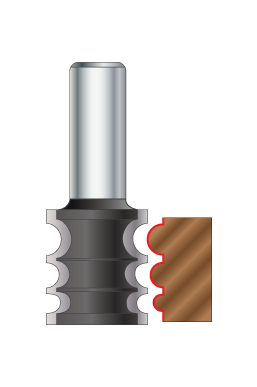
The variable beading router bit is quite similar to the triple bead tool due to the fact that when used, it produces three beads but unlike the symmetric pattern produced by the latter, the variable beading tool produces three asymmetric beads on edges. It can be used to design bedposts, tables, chairs, and stools.
Variable double chamfer assembly
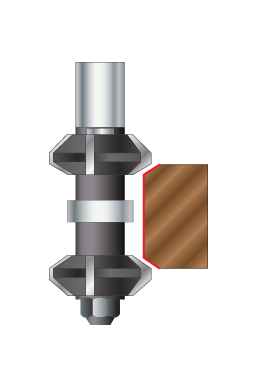
When in need of double chamfers on two wooden edges, the variable double chamfer bit should be your go-to tool. The chamfer can be switched from a 30-degree angle to a 45 to provide some variety when applied on edges. It consists of multiple chamfer cutters in three wings to get the job done.
Veining single flute router bits
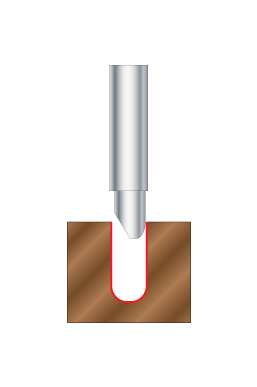
The veining single flute router bit cuts a semi-circle flanked by two straight edges when applied on a flat surface. The depth of the cut when applied can be quite deep thereby giving it its name as a veining bit. The tool comes with varying bearing lengths which can be chosen according to the user’s needs.
Here we come to the end of our description of some of the most popular router bit profiles used in woodworking. There are other router bits out there and if you fill we have missed one that is regularly used by you, do not hesitate to add it in the comment space below.
